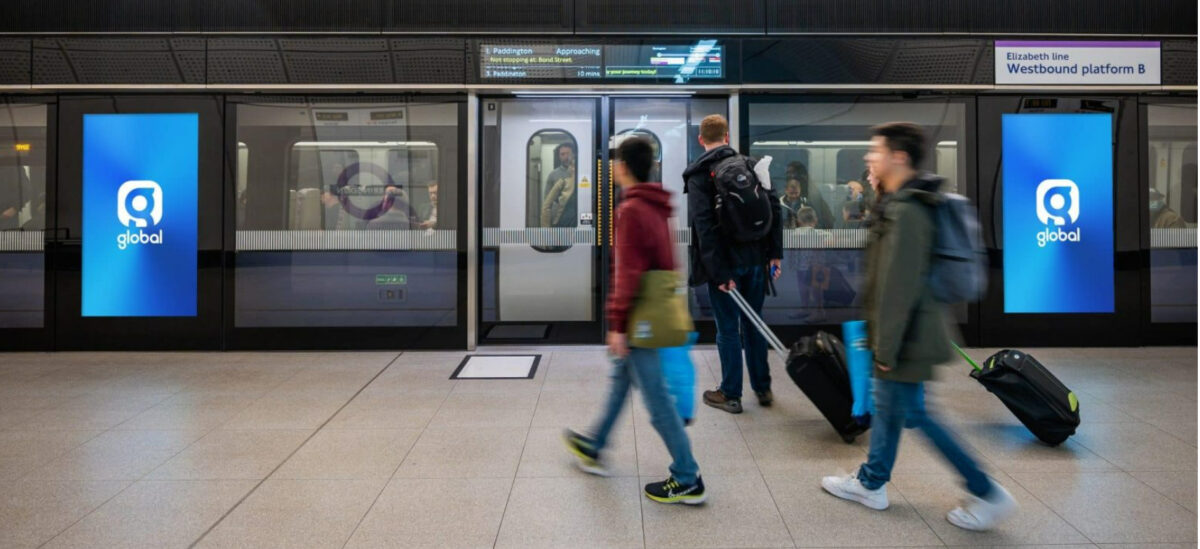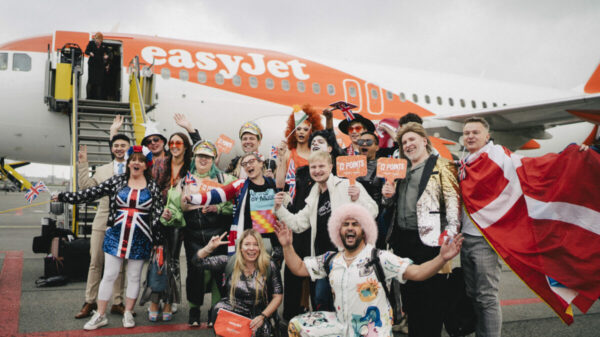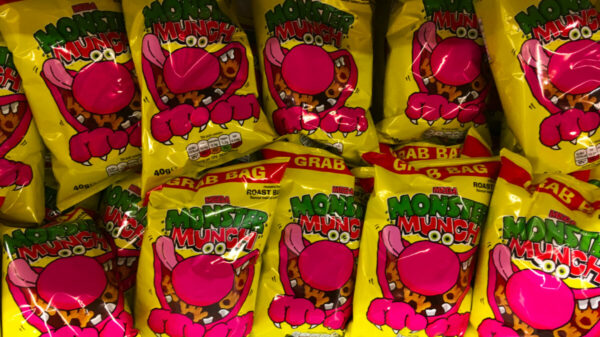Who among us hasn’t sat daydreaming on the tube, scanning the ads above and making an absent-minded note to start looking into booking a holiday or signing up to Invisalign when they get home. As captive audiences go, TfL commuters are an absolute jackpot.
Media company Global is the sole provider of Transport for London (TfL) advertising opportunities. Its exclusive partnership covers the entire network’s ‘Rail Estate’, including London Underground, London Overground, Tramlink, Docklands Light Railway, Victoria Coach Station and the Elizabeth line (Crossrail).
Whether through posters, digital screens, station takeovers or bus wraps, Global offers brands and advertisers the opportunity to communicate across 1.5 billion passenger journeys each year, equal to five million passenger journeys every day.
In terms of advertising mediums, Londoners reportedly hold TfL ads in high esteem. According to a recent neuroscience study, London Underground ads are a “welcome distraction to the daily grind”, with 65% of commuters claiming that London Underground advertising is not as “intrusive” as other advertising methods. Almost two-in-three (60%) tube passengers also claim to ‘notice’ new ads that are placed on the network.
So, with the adverts’ effectiveness in mind, what more can we learn about how TfL and Global advertise to commuters?
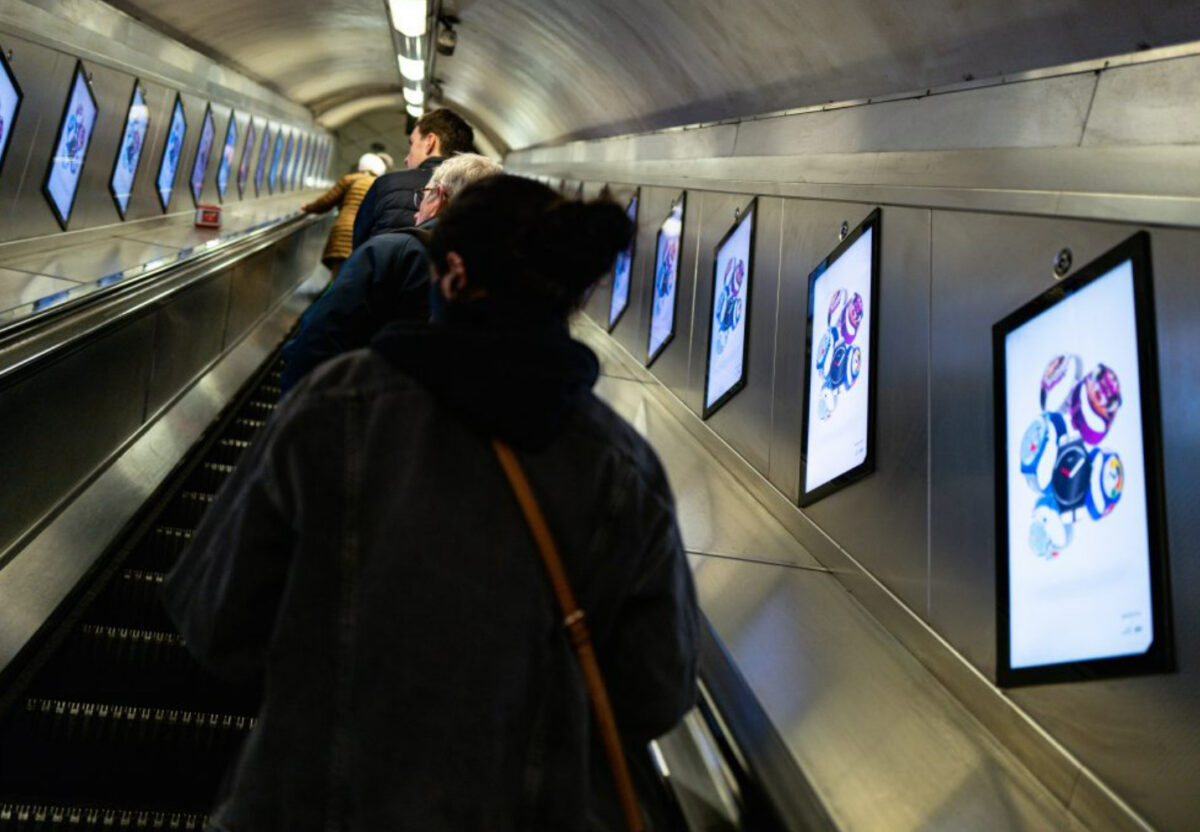
Digital
Global’s full-motion video network includes “state-of-the-art” digital products across TfL, and aims to deliver more “flexible and dynamic” campaigns for brands.
Ads displayed on the Ultra HD digital network reach up to 4.4 million UK consumers and deliver around 276 million impressions every week. Global believes that the form “cuts through” to the young and hard-to-reach audiences aged under 35.
The digital sites – including formats d6, d12, dx48, dep, digital ribbon and digital gateway – all bring scale to advertising campaigns in “brand-safe, contextual environments”. Informed by Global’s reported “wealth” of data and insight, the media company selects premium locations with high-dwell times to deliver maximum engagement.
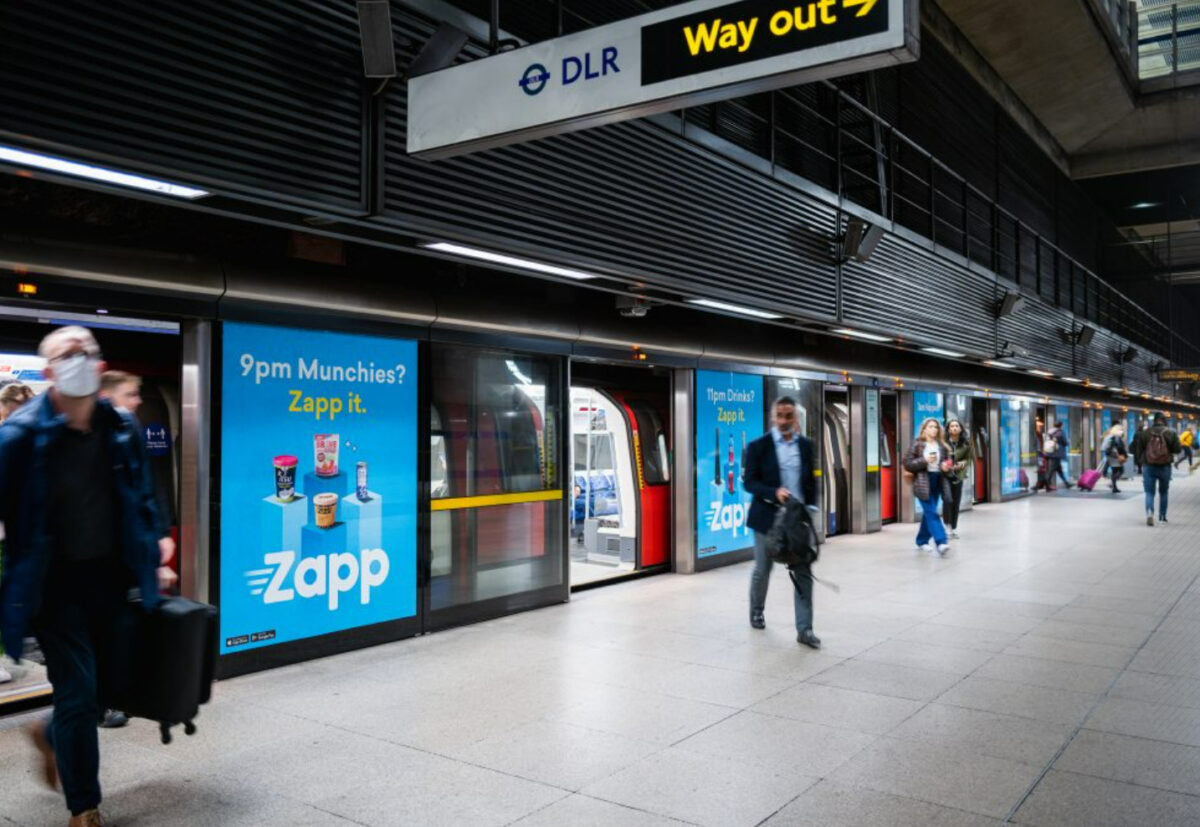
Data
TfL and its media partner have used first-party data from passenger movements to provide insights to advertisers since 2016.
“In 2015, there was very little data available to understand audiences passing through the Tube network,” TfL said. “There was also limited access based purely on total daily passenger volumes and survey data.”
Now, however, the transport company’s Oyster and Contactless payment data allows it to see the geo-demographic makeup of every single entry and exit on the network within a 15-minute increment. In the past few years Global has also built new tools to visualise and plan targeted campaigns based on this data.
The TfL’s connected infrastructure – otherwise known as WiFi – have also been used to define how people walk through every ticket hall, platform and corridor. Using 3D models of every station on the network, TfL’s Data Science team has created a proposition that uses ‘depersonalised data probes’, giving Global and subsequent advertisers a “unique understanding” of how passengers travel across the network, both historically and in near real-time.
As for the benefits for advertisers, TfL has affirmed that its offering allows clients to target audiences more efficiently throughout the course of their journey.
“For any combination of frames, corridors, platforms or stations, we can identify the unique number of people that have been in those areas” the company added. “We can also identify the number of times they have been there. No other environment in the world has this capability. Our data on real people in the real world is sourced directly from our data.”
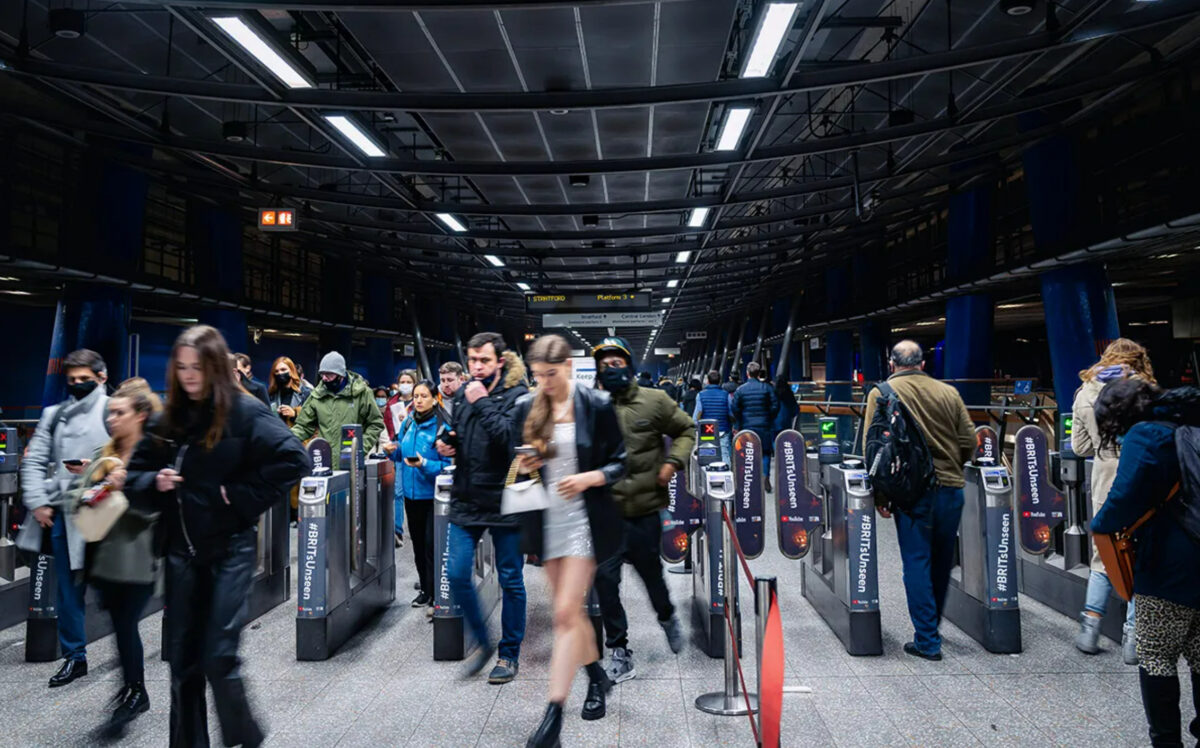
Innovative forms
Besides in-carriage ads, digital screens and station posters, TfL and Global also unveil more innovative forms of advertising from time to time.
Last month, Global and Twinings placed a scented corridor within a train station in a bid to promote the brand’s ‘Sleep’ tea. Posters encompassing the walls were scented with spiced apple, vanilla flavours and floral notes, releasing chamomile scents all along the tube corridor.
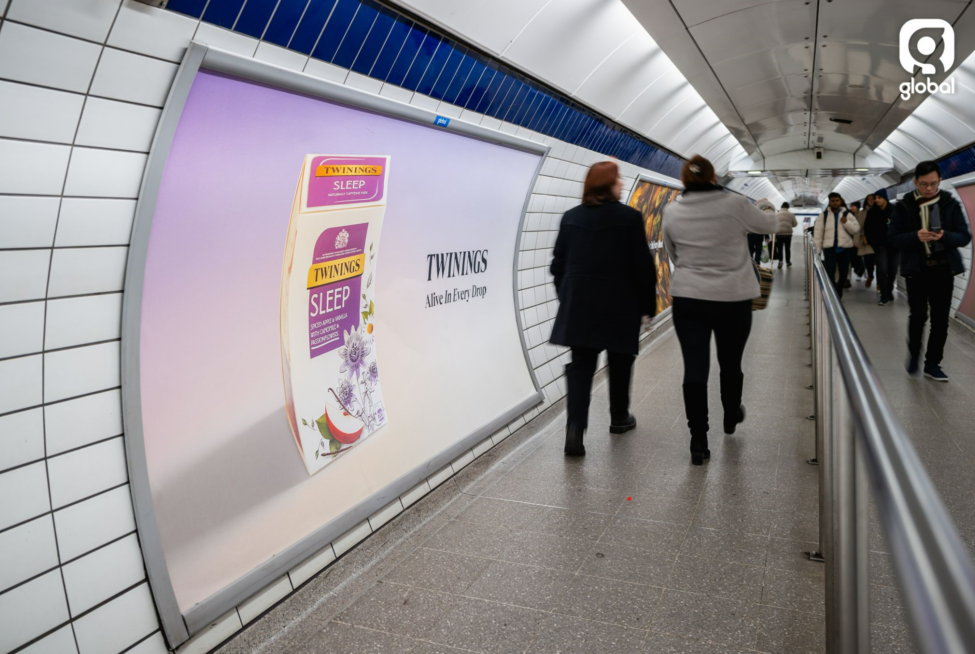
TfL and its advertising partner have also implemented several station takeovers, with brands such as Oatly, Charlotte Tilbury and Netflix wrapping corridors in innovative ads.
The streaming giant Netflix announced the launch of its new film ‘Glass Onion: A Knives Out Mystery’ by placing several of the film’s characters in tube corridors.
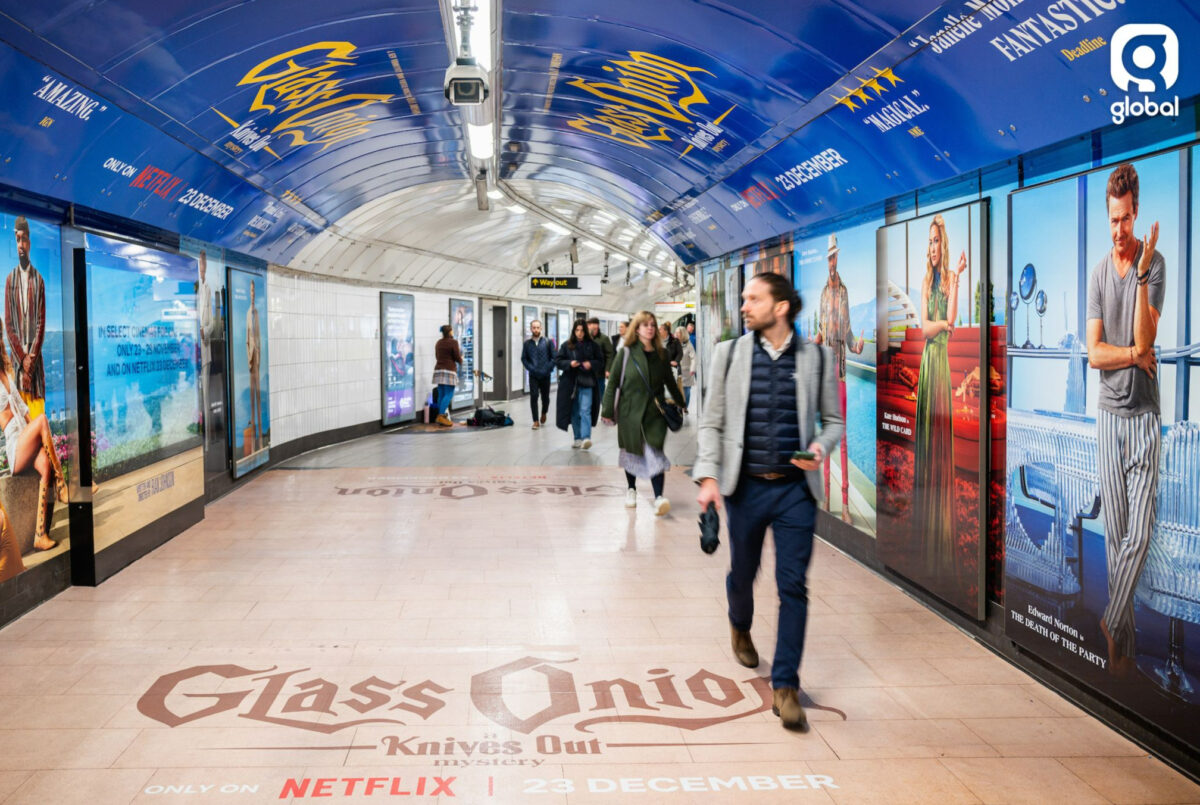
Drink brand Oatly opted to ‘spam’ Euston station with hopes of encouraging commuters to sign up to its free monthly newsletter. Some of the tongue-in-cheek messaging read: “There are probably better ways to promote a newsletter about an oat drink than 5538 popups. Well, too late.”
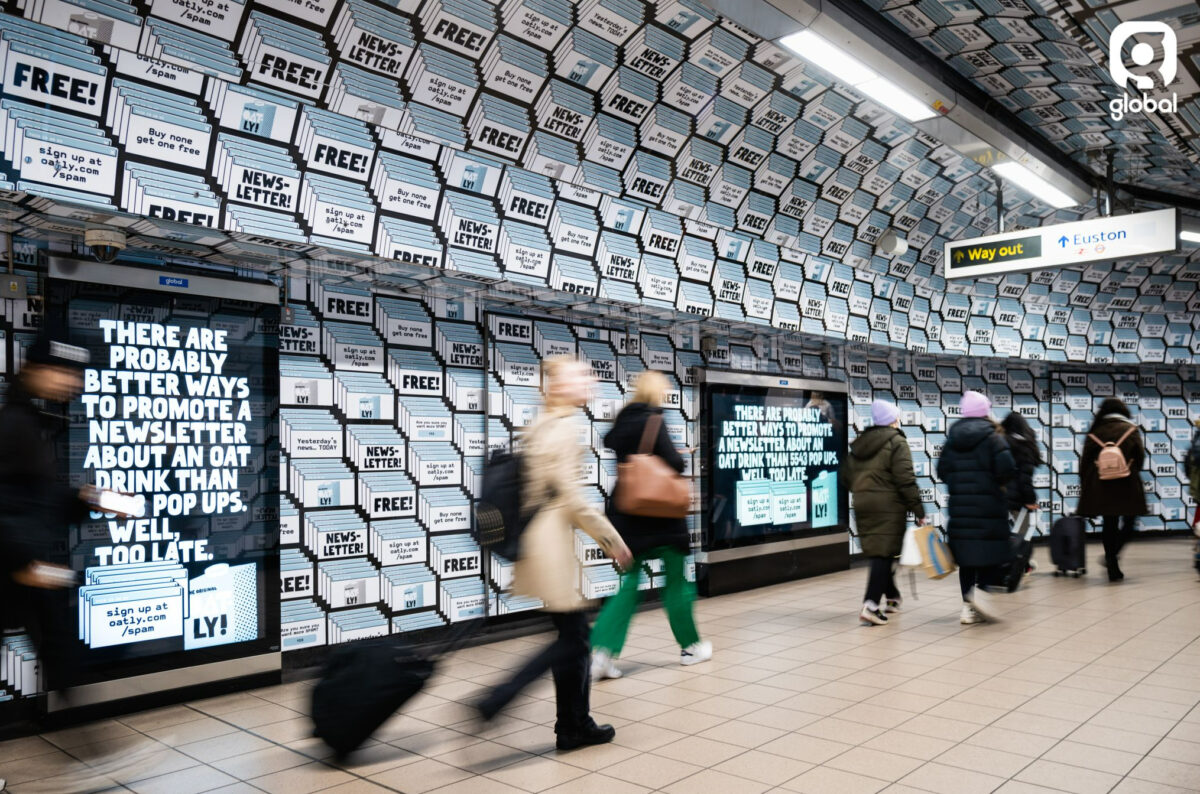
Charlotte Tilbury also gave Oxford Circus tube station a glow up with by 360-wrapping a corridor and implementing lenticulars that changed image as commuters passed by. Global described the stunt: “as premium as their makeup range.”
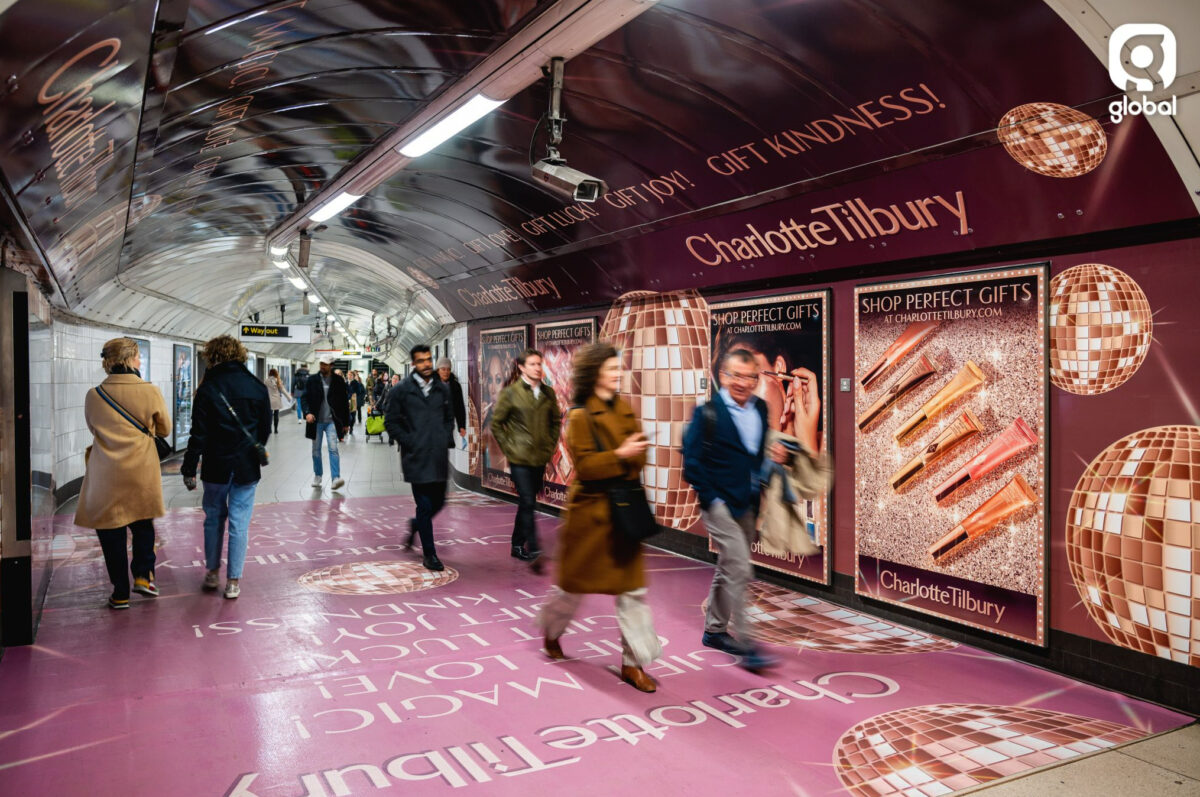
TfL and Global also frequently launch out-of-home (OOH) bus wraps. Most recently, the network unveiled a variety of wraps for the Hogwarts Legacy game, dubbed as the “largest single player game ever on Twitch”. In February, fans who tweeted a photo of any of the five bus designs using #HogwartsLegacyBus were in with a chance of winning a Hogwarts Legacy Collector’s Edition on PlayStation 5.
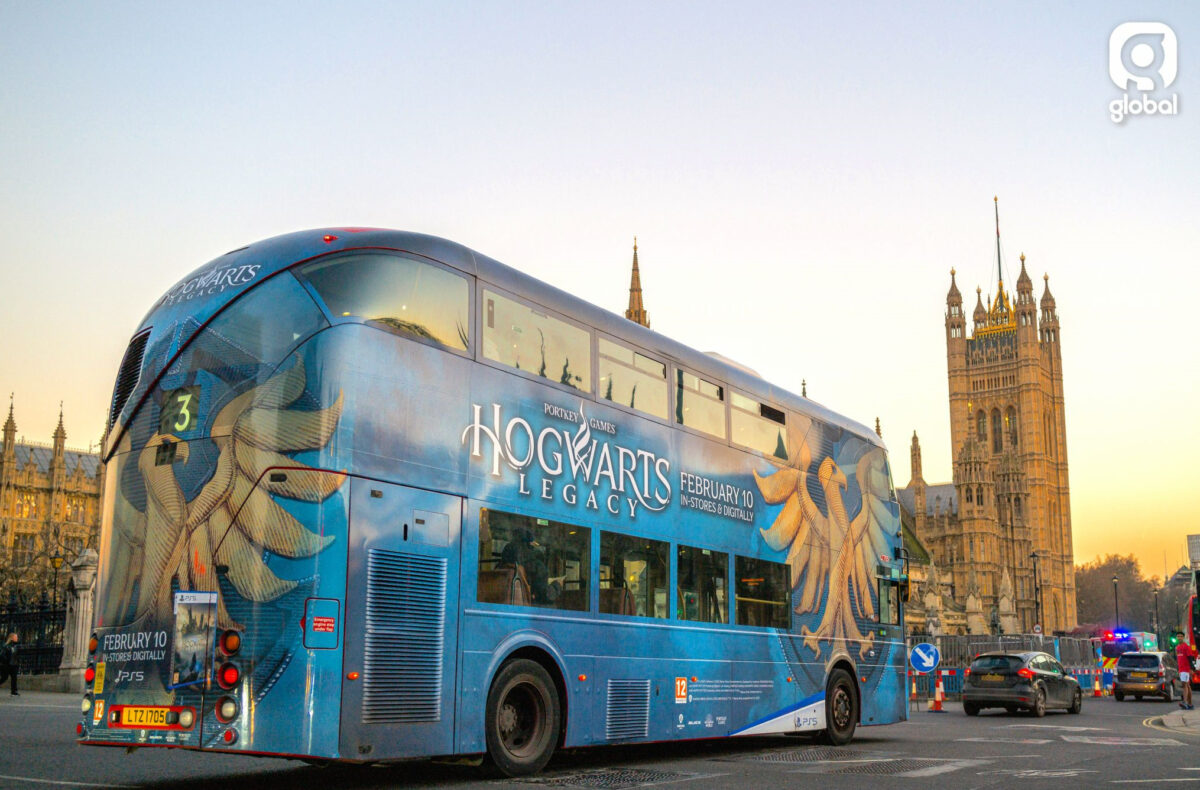
Elizabeth Line
Launched on 24 May, the Elizabeth line has completed 50 million journeys since and has the capacity to cater for nearly 140,000 passengers every day.
Its ad network – also provided by Global – provides advertisers with 16 digital runways, 7 ribbons, 4 digital gateways, 32 digital 6s and 52 new halos.
In October, Global completed the integration of the Elizabeth line into its digital advertising platform, DAX, making Global the biggest digital outdoor network in the UK with over 4000 screens. According to the media company, advertisers can now activate data-driven campaigns on all ultra-HD, video-enabled digital billboards throughout the line, including the edge screens, the digital posters above the escalators at Tottenham Court Road, Farringdon and Bond Street, and every digital escalator panel.
